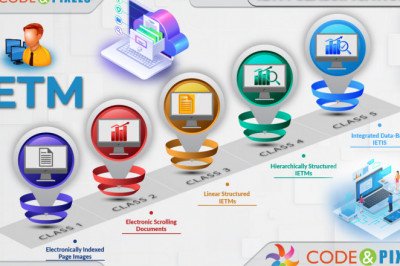views
However, it is only in its infancy. It will take time before this technology can take root in our daily lives. There are still many cases of projects where traditional databases, such as MySQL, perform better than BlockChain.
So how do you know if BlockChain is right for your mobile app project ? It is only when one understands the advantages and disadvantages of this technology that it is possible to answer this question.
Blockchain, what are we talking about?
A blockchain is the data structure that the Bitcoin cryptocurrency uses for its public ledger, where all of its transactions are recorded. On the other hand, we find the term “block chain” in one of the comments added inside the code.
Due to its unclear origin, there is no precise definition of what a blockchain is. Although almost no one disputes that Bitcoin uses the BlockChain development service, opinions on other uses of this technology vary. Some even claim that the only proper use of this term is in connection with the Bitcoin protocol
In general, when we talk about the BlockChain, we think of a distributed database comprising blocks of data. In addition to the data stored there by users, each of these blocks contains a timestamp and a cryptographic link to a previous block. The BlockChain database is readable to many people, perhaps even all of its users. We will also not forget to mention its peer-to-peer architecture . This characteristic differentiates it from the client-server logic which is nowadays the most common on the internet. In practice, this means that users can carry out transactions without having to go through a third party.
This is the technology behind the Bitcoin currency. If you want to create an application with a pseudonymous electronic payment system, you will need BlockChain, but this technology lends itself to many other uses.
Advantages and disadvantages of BlockChain
The fact that the BlockChain is a distributed database makes it particularly useful in certain respects. Distributed applications run on networked computers. They coordinate their actions by passing messages between different instances of the application or through shared memory. This allows them to have a higher level of availability than "classic" applications. In addition, they cope better with outages that isolate one part of the network from its other parts.
These advantages do not come without some disadvantages. It can be complicated to keep data in a BlockChain database. Indeed, there is no guarantee that an update performed in one place will also be performed on other parts of the network. This means that theoretically someone could spend the same bitcoin more than once . Fortunately, the way the Bitcoin blockchain records transactions is designed to solve this problem.
Building apps with BlockChain is hard
Developing and testing distributed applications is not easy. Using testing and debugging software on a single computer is taxing enough. Using software that must simultaneously interact with other software on the network is even more difficult. The unstable operation of computers is the origin of the term “ heisenbug ”. The latter is defined as a bug that changes its behavior when you try to test it. You will surely see some of these when developing an application with BlockChain .
You can also expect to encounter " mandelbugs ". In the case of these bugs, the cause is so uncertain and complex that the observed behavior seems to be a good illustration of chaos theory. You will also encounter “ schrödinbugs ”. These are very clever bugs that you won't notice until someone uses your app in an unconventional way. This will cause new and unexpected behavior.
These bugs are difficult to deal with in non-distributed applications, but they are even more so in distributed applications. This is why developing applications with bsc token development is more complex and more expensive than one might think.
The fact that the data appears in a blockchain does not mean that it is exact. In the case of Bitcoin, it is relatively easy to verify if a transaction is valid. This is done by using public key cryptography to certify the authenticity of Bitcoin transfers from one owner to another. The authenticity of a bitcoin is verified before it can be added to the blockchain. It is however unclear how the data could be validated in other BlockChain applications.
The distributed nature of blockchains makes them surprisingly difficult to process. To sum up, the BlockChain presents two major difficulties for application developers. First, you have to find a reliable way to validate the data that will be written to the blockchain. Then, once that's done, you'll need to subscribe that data to the string.
TO get more info
visit : https://www.blockchainx.tech/bep20-token-development












Comments
0 comment